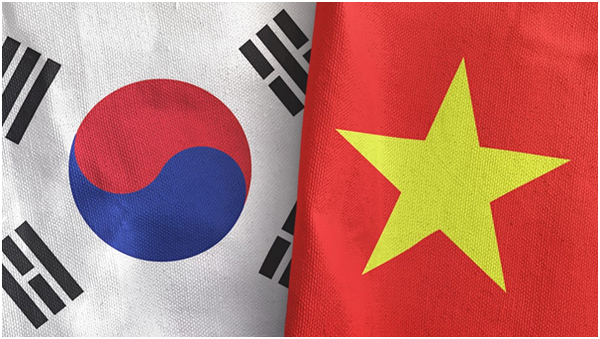Market Entry Strategies for South Korea SMEs in Vietnam
- Khôi Nguyễn Duy
- Oct 4
- 3 min read
Updated: Oct 22
South Korea has long been one of Vietnam’s most important economic partners. Beyond conglomerates like Samsung, LG, or Lotte, South Korea SMEs in Vietnam are increasingly making their mark in sectors from beauty to food and fashion. Fueled by the global wave of K-culture, Korean products have quickly won the hearts of Vietnamese consumers. Yet, challenges remain — from intense competition to high marketing costs — meaning that success for South Korea SMEs in Vietnam depends on careful strategy and smart resource allocation.

Investment Scale & Key Sectors of South Korea SMEs in Vietnam
South Korea consistently ranks among the top three FDI investors in Vietnam, with SMEs representing a significant share of projects.
Key industries for South Korea SMEs in Vietnam include:
K-beauty (cosmetics & personal care): strong demand among young consumers aged 18–35.
K-food & beverages: spicy noodles, fried chicken, beer, soju, and ready-to-eat meals.
Fashion & accessories: Korean-style products appealing to urban youth.
The strength of South Korea SMEs lies in their agility to follow consumer trends and leverage KOLs and Korean idols to boost brand recognition.

Key Challenges for South Korea SMEs in Vietnam
Despite their advantages, South Korea SMEs in Vietnam face multiple challenges:
Intense competition: not only among Korean SMEs themselves but also with established local and international brands.
High marketing costs: sustaining K-culture image requires significant budgets for KOLs, social media, and activations.
Compliance complexity: particularly in cosmetics, requiring product registration and testing that can delay launches.
Working capital pressure in MT: listing fees, trade discounts, and long credit terms create financial stress.
Opportunities & Market Potential
Vietnam offers many bright spots for South Korea SMEs:
Consumer preference for Korean products: from K-beauty to K-food, Korean goods are seen as trendy and desirable.
Fast-growing e-commerce: platforms like Shopee Mall, LazMall, and TikTok Shop provide cost-effective entry points for testing products.
FTAs (VKFTA, CPTPP): tariff reductions on multiple categories, especially FMCG and F&B.
MT & Horeca channels: Korean food and beverages are increasingly visible in supermarkets, convenience stores, restaurants, and bars.

Entry Strategy by Distribution Channel for South Korea SMEs in Vietnam
Selecting the right distribution channel is critical for South Korea SMEs in Vietnam to balance growth and costs:
General Trade (GT): Less suitable due to fragmented structure and mid-to-premium positioning of most Korean products. However, snacks and instant noodles can leverage GT for broad coverage.
Modern Trade (MT): The most relevant channel for K-beauty and K-food. Still, SMEs must prepare significant budgets for listing fees, trade discounts, and in-store activations.
E-commerce: The most effective entry point for SMEs. By using KOLs, livestreaming, and social commerce, Korean products can scale quickly and test demand at lower upfront costs.
Horeca: Ideal for Korean beverages and food (soju, beer, fried chicken). Horeca not only drives direct sales but also builds experiential branding.

Risks & How to Mitigate Them
Working capital strain: MT credit terms of 30–60 days → combine with e-commerce to improve cash flow.
Overspending on marketing: chasing KOL-driven campaigns without clear ROI → requires disciplined measurement.
Compliance delays: especially for cosmetics → mitigate by preparing documentation both in Korea and Vietnam simultaneously.
Local competition: many Vietnamese brands mimic Korean style → differentiation through quality and service is essential.
Vietnamese consumers are eager for Korean products, creating a fertile ground for SMEs. Yet to succeed, South Korea SMEs in Vietnam must adopt a smart channel strategy, balance marketing investments, and carefully manage working capital. With local expertise and strong distribution networks, Go2Market (G2M) Vietnam supports Korean SMEs across e-commerce, GT/MT, and Horeca channels — helping them optimize costs, reduce risks, and accelerate sustainable growth.



